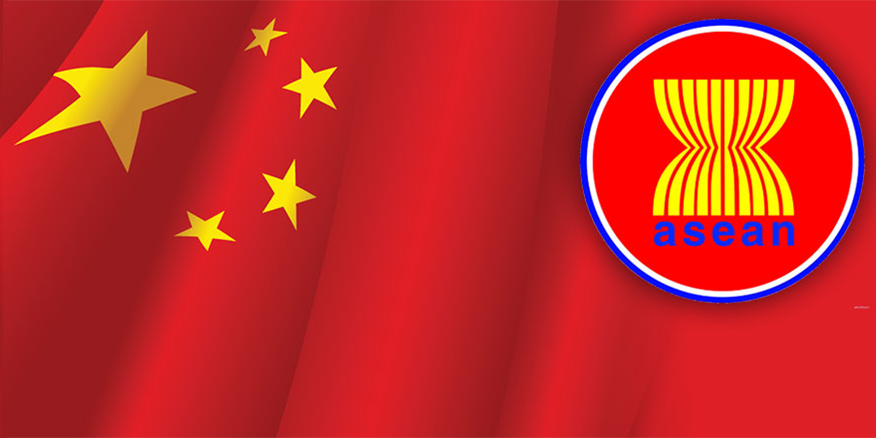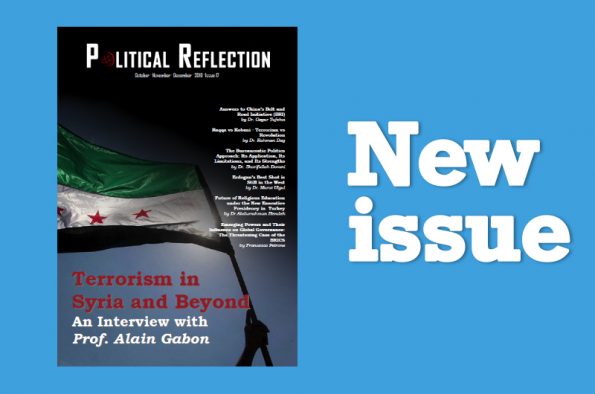
Established in 1967, the effectiveness of the Association of Southeast Asian Nations (ASEAN)1 as a regional security institution in addressing traditional security issues has been subject to continuing debate among policy makers, academics and practitioners. The contestation on its significance has been heightened in the face of the emerging regional rivalry between the Peoples’ Republic of China (PRC) and the United States (US) over the South China Sea (SCS) on the one hand, and sovereign and maritime rights dispute between the PRC five (5) ASEAN Member States (AMS) in the SCS on the other hand.
While some argue that ASEAN and its regional institutions are simply “talk shops” hence structurally ineffective in resolving inter-state conflict2, others view ASEAN’s founding norm and value of non-interference into the affairs of another country in the region, known as the ASEAN Way3, as the key salutary factor that contributes to the amiable relation between and among states in Southeast Asia (SEA). They further argue that the ASEAN Way standardizes behavior of states through the doctrine of non-use of force or threat of force in dealing with disputes, and respects sovereignty and territorial integrity of nations.4 The ASEAN Way is claimed to have been responsible for thwarting inter-state armed conflict for nearly half-a-century.
The conflicting perspectives on the role of ASEAN in mitigating or resolving conflict in the region are fundamentally rooted on the contrasting value of the ASEAN Way as ASEAN’s security framework. This commentary briefly reflects on the praxis of the ASEAN Way as a doctrine in dealing with a host of new challenges confronting the region, which were not present during the initial years of its existence. In as much as fortifying the region’s security remains ASEAN’s foremost concern, it is imperative to re-assess the relevance of the ASEAN Way as a doctrine and process of defusing intra- and extra-regional conflict, maintaining peace, and advancing the neutrality of the AMS as provided in the ASEAN’s Declaration of Zone of Peace, Freedom and Neutrality (ZOPFAN) and the Treaty of Amity and Cooperation in South East Asia (TAC) of 1971 and 1976 respectively.
Territorial conflict
The ASEAN Way’s process of making decisions rests on unanimity. Rulings and judgments made in a collective and collegial manner take a long time with a no fixed time-table. Negotiations are conducted until all parties have reached an agreement. This process is rooted in the Asian culture where decisions are made on a consensual and consultative basis. As this process is ingrained in ASEAN, disputes between AMS are refereed by international adjudication bodies rather than being decided by the instrumentalities of ASEAN.
For instance, the Malaysia– Indonesia dispute over the Sipadan and Ligitan Islands in the Sulawesi Sea and the Singapore–Malaysia dispute over the Pedra Branca islands in the South China Sea were settled in 2002 and 2008 (in favour of Malaysia and Singapore respectively) through arbitration by the International Court of Justice (ICJ). The Thai–Cambodia dispute over the Preah Vihear temple (called Phra Viharn in Thailand), one of the worst intra-ASEAN conflicts on record, was likewise decided by the ICJ in 2013. Moreover, the Ambalat sea block in the Celebes sea continues to be contested by Indonesia and Malaysia and their case has been submitted to the ICJ. Similarly, Singapore and Malaysia’s dispute over the Horsburg Lighthouse is before the ICJ.
In the case of the on-going territorial dispute in the SCS – contested between the PRC, the Republic of Taiwan, and five ASEAN countries (Brunei, Indonesia, Malaysia, the Philippines, and Vietnam) – the Philippines opted not to use the ASEAN Way as the route in addressing the dispute and claiming its maritime rights. Instead, it filed a case and sought a ruling from the Permanent Court of Arbitration (PCA)5 in 2013 concerning the country’s legal entitlements under the UN Convention on the Law of the Sea (UNCLOS). Contrary to what the ASEAN Way prescribes, this was done without prior consultation with other ASEAN members.
While Chapter 8 of the 2008 ASEAN Charter provides the mechanism on how to settle intra-regional disputes, and the 2009 ASEAN Political-Security Community (APSC) Blueprint defines ASEAN’s centrality in regional security and reinforces SEA’s regional autonomy in its relations with external powers, particularly the PRC and the US, no AMS has ever utilized them in sorting out disputes.
ASEAN’s institutions and other mechanisms
Other institutions and processes designed to resolve intra-and extra-ASEAN conflicts through the ASEAN Way are multilateral in nature, which do not only necessarily share ASEAN’s belief on managing conflict but subscribe to their own view in reconciling conflict. These include: the ASEAN Regional Forum6, the ASEAN Defense Ministers Meeting Plus (ADMM)7, and the Shangri-la Dialogue (SLD).8 Evidently, these institutions are composed of an assortment of highly-developed and less-developed countries, which have their respective interests to protect. Neither do these institutions possess the power to fairly adjudicate conflict nor authority to enforce whatever decisions that may collectively arrive at. They are simply venues where ideas are exchanged and debated, which, on a smaller scale, are not different from the United Nations.
The importance of multilateral institutions though lies in addressing transnational non-traditional security (NTS), or human security issues, which are non-military in nature, like environmental degradation, pandemics, terrorism, maritime piracy, illegal migration, drug trafficking, people smuggling, money laundering and other forms of transnational crime that do not respect national boundaries. Tackling NTS issues however requires regional governance based on the framework of democracy, human rights and social justice. AMS do not possess a single, or uniform, framework where notions of democracy, human rights and social justice can be gauged or measured due to the diversity in culture, religion, ethnicity, economic development and political systems. In fact, there is little regional governance occurring in ASEAN, as all AMS are wary about surrendering their sovereignty and political autonomy to a supranational institution.
Conclusion
It appears that the ASEAN Way doctrine had not been critical in resolving brewing intra-regional territorial conflict. Its frailty as a framework of ASEAN security consequently increases insecurity in the region. The non-intervention of ASEAN over the Rohingya genocide committed by the Myanmar state or indiscriminate killings of Patani minorities in Southern Thailand led to massive refugee crisis and greater instability in neighboring countries. This is similar to NTS issues – i.e., drug trafficking, maritime piracy, people smuggling, etc. – that affect all AMS and destabilize the region, yet ASEAN simply watches with a blind eye.
Equally important is the ability of the ASEAN Way to maintain regional unity in rallying behind AMS in the face of the PRC and US rivalry in the SCS. The ASEAN Way of non-interferences, conflict avoidance, face saving and an incremental approach to conflict resolution through consensus and dialogue makes it increasingly difficult to cope with the new contours of Sino-American contestation in SEA. While many like to see a strong US presence in Asia to provide an effective balance in the region, few want to be caught in the crossfire between Washington and Beijing.9
There is a need to rethink the doctrine of ASEAN Way as an approach and mode of securing and preserving peace in Southeast Asia. As a matter of practical necessity, the ASEAN Way has to make itself relevant in the face of real world changes and challenges without sacrificing and compromising the peculiarities and idiosyncrasies of people comprising the ASEAN member states.
Rizal G. Buendia, PhD (Political Science)
Independent Consultant and Researcher, Southeast Asian Politics
Consultant and Researcher in Southeast Asian Politics and International Development based in Wales, UK. Former Chair of the Political Science Department, De La Salle University-Manila, Philippines and Teaching Fellow, Department of Politics and International Studies and the Department of Development Studies, School of Oriental and African Studies (SOAS), London, UK.
Notes:
- An inter-governmental organization, composed of 10 Southeast Asian (SEA) countries, was founded on 8 August 1967 by five (5) countries, namely: Indonesia, Malaysia, the Philippines, Singapore, and Thailand. Other countries joined in 1984 (Brunei), 1995 (Vietnam), 1997 (Laos and Burma) and 1999 (Cambodia). It was organized to promote inter-state economic, political, security, military, educational, and socio-cultural cooperation.
- See David Martin Jones and Michael Smith, ‘Making Process, Not Progress: ASEAN and the Evolving East Asian Regional Order’, International Security, Vol. 32, No. 1, pp. 148–184 (2007); Nick Bisley and Malcolm Cook, ‘How the East Asia Summit can Achieve its Potential’, ISEAS Perspective, No. 56 (2014); Masashi Nishihara, ‘A Separate Group for the “Maritime” ASEAN Nations’, PacNet, No. 63, 25 August, 2016.
- The “ASEAN Way” is a concept of inter-state relation and regional cooperation that consists of avoidance of formal mechanisms and legalistic procedures for decision-making, and reliance on musyawarah (consultation) and mufakat (consensus) to achieve collective goals. See Amitav Acharya, `Ideas, Identity and Institution-Building: From the ASEAN Way to the Asia-Pacific Way?’ The Pacific Review, Vol 10, No. 3, pp. 319-346. (1997).
- Amitav Acharya, ‘How Ideas Spread: Whose Norms Matter? Norm Localization and Institutional Change in Asian Regionalism,’ International Organization, Vol. 58, No. 2, pp. 239–75 (2004); Hiro Katsumata, ‘Mimetic Adoption and Norm Diffusion: “Western” Security Cooperation in Southeast Asia?,’ Review of International Studies, Vol. 37, No. 2, pp. 104–21. (2011).
- The PCA is an intergovernmental which has a UN Observer status that provides services of arbitral tribunal to resolve disputes between member states, international organizations or private parties. Cases include a range of legal issues involving territorial and maritime boundaries, sovereignty, and human rights among others. See https://pca-cpa.org/en/home/ for details.
- A formal, official, and multilateral forum in the Asia Pacific region established to foster constructive dialogue and consultation on political and security issues. It consists of 27 countries of Australasia, North America, the EU, and Asia (SEA, NE Asia, and South Asia). See http://aseanregionalforum.asean.org/ for details.
- ADMM Plus is composed of 10 ASEAN Defense Ministers and other Defense Ministers of Australia, China, India, Japan, South Korea, New Zealand, Russia and the United States.
- SLD is a “Track One” inter-governmental security forum held annually by the International Institute for Strategic Studies (IISS) participated by defense ministers, permanent heads of ministries and military chiefs of 28 Asia-Pacific states.
- Carlye A. Thayer, ‘The United States, China and Southeast Asia,’ In: Southeast Asian Affairs, edited by D. Singh. Singapore: Institute of Southeast Asian, pp. 16-25. (2011).
To Download click here.
How to Cite:
BUENDIA, R. (2018), ‘Is the ‘ASEAN Way’ the Way to ASEAN Security?’, Political Reflection Magazine, 4(4): 36-39.



